This dazzling Italian city should be your first post-lockdown escape

It’s a rare thing – as a tourist ticking off the sights – to be caught off guard by a surge of emotion. But as I walked into the Mausoleum of Galla Placidia in Ravenna I had to put out my hand to steady myself. I found a chair and sat down to try to process what I was seeing.
The dome and vaults of this small, cruciform building are entirely covered in brilliantly coloured mosaics. Hundreds of gold stars shimmer against a background of the richest, deepest ultramarine.
Grape vines and pomegranates and complex abstract patterns picked out in red, green and turquoise line the arches between the vaults. On the walls below, two stags, entwined with foliage drink at a waterhole, while below the dome, toga-clad figures float among the glittering tesserae. And, presiding over all above the entrance door, the good shepherd sits on a throne of rocks among his sheep.

The dazzling colours, the bewildering complexity of the decoration, the simple serenity of the figures – all would be enough to quicken your breath. But I think what had intensified the moment for me, what brought on that overwhelming rush of emotion, was that knowledge that these mosaics and the space they bejewel are nearly 1,600 years old.
We are used to the relics and ruins of ancient times. Stonehenge is much, much older. The Pyramids and the Parthenon, too. But what I had never experienced with anything like the same force was the sense of being inside an interior, intact, profoundly ancient, and of such extraordinary splendour.
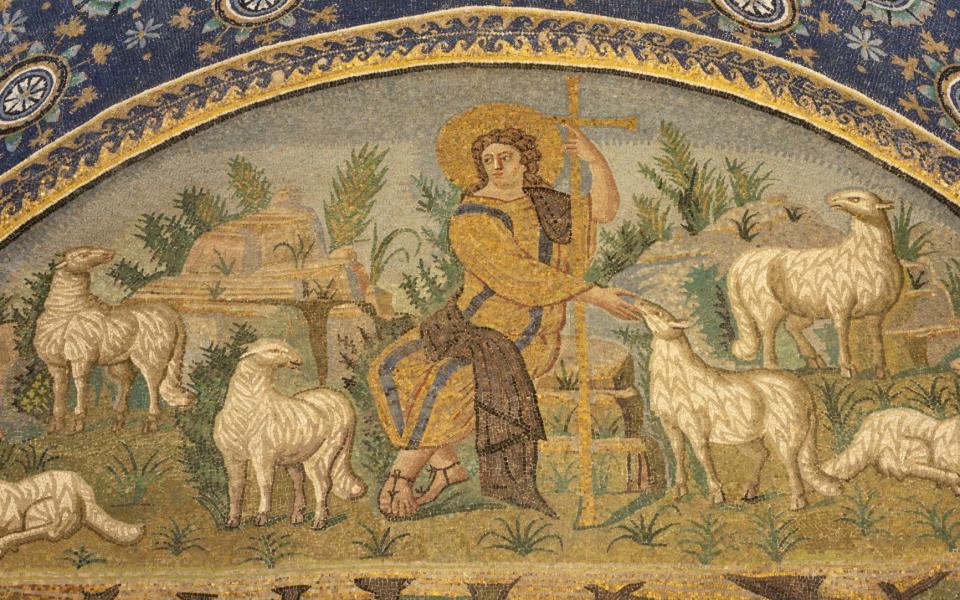
True – a few frescoed rooms survive in the Domus Aurea in Rome, and in and around Pompeii. And apparently when they were first uncovered in the 16th and 18th centuries, the colours were still rich. But they are long-faded now. By contrast, the tiny tesserae that form the mosaics in Ravenna are made of coloured glass and gold leaf. They are not dulled by light; it brings them to life – as vivid now as in AD 450.
What is even more extraordinary about Ravenna is that the mausoleum is just one of several amazing survivals from the 4th-6th century, nearly all with dazzling mosaics. The city was at its height during the centuries before and after the end of the Roman Empire. The first Christian emperors deployed the great pagan artistic traditions towards a spectacular show of piety: instead of temples, they built churches and the great Roman tradition of mosaic making was adapted to decorating the walls and ceilings. And the Barbarian kings that followed them strove to emulate their achievements.
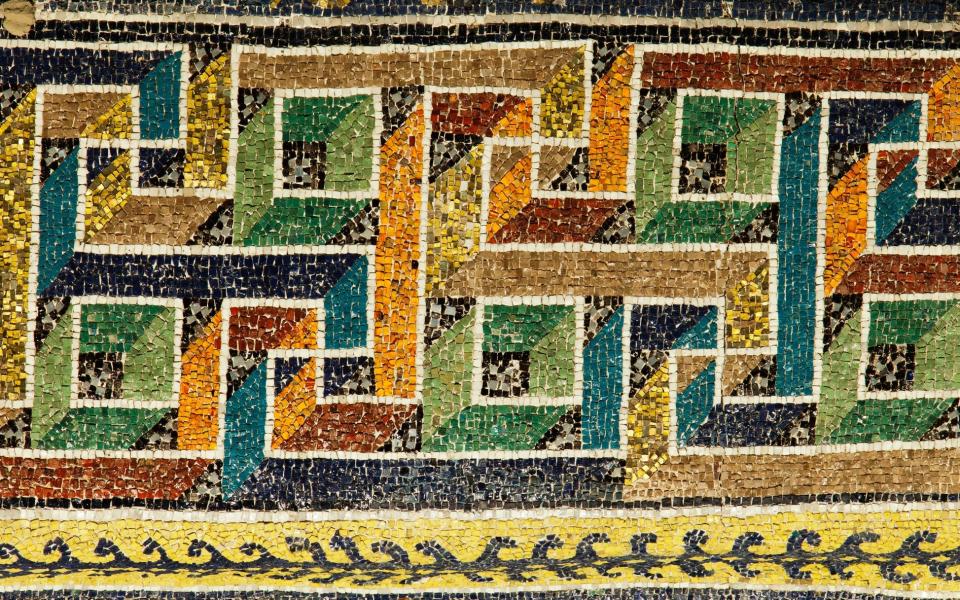
I was lucky in some senses, because I visited in November. The mausoleum was empty when I entered, free of the distraction of tour groups and the chatter of their guides.
The history, the doctrines, the iconographies are extraordinarily complex. Walking around Ravenna, it can be hard to get your head around the connections between these wonderful buildings. It doesn’t matter, you can tuck into the visual feast and not worry about it. But I’ve pulled out the highlights in date order.
The Earliest Mosaics Mausoleum of Galla Placidia
AD 425-450
Galla was daughter of Theodosius the Great – Roman Emperor from AD 379-395 and the last to rule over both east and west empires. In fact, despite the name, this is most likely not her mausoleum. She was probably buried in Rome, and she commissioned this building as a chapel dedicated to St Lawrence attached to a church – Santa Croce – which is now ruined. St Lawrence is the subject of the mosaic opposite the entrance door. There have been some restorations over the years, but the decoration is essentially intact. However, the proportions of the building have been lost because the ground level has risen over the centuries and the floor is now much higher than originally.
Baptistery of Neon
AD 425-450
Along with those in the Galla Placida Mausoleum, the mosaics in the Baptistery of Neon are among the earliest surviving in the city. The early archbishops adapted it from a former Roman bath house between their palace and the cathedral. The central mosaic, on the underside of the dome, is a wonderful depiction of Christ in baptism, immersed in the River Jordan.
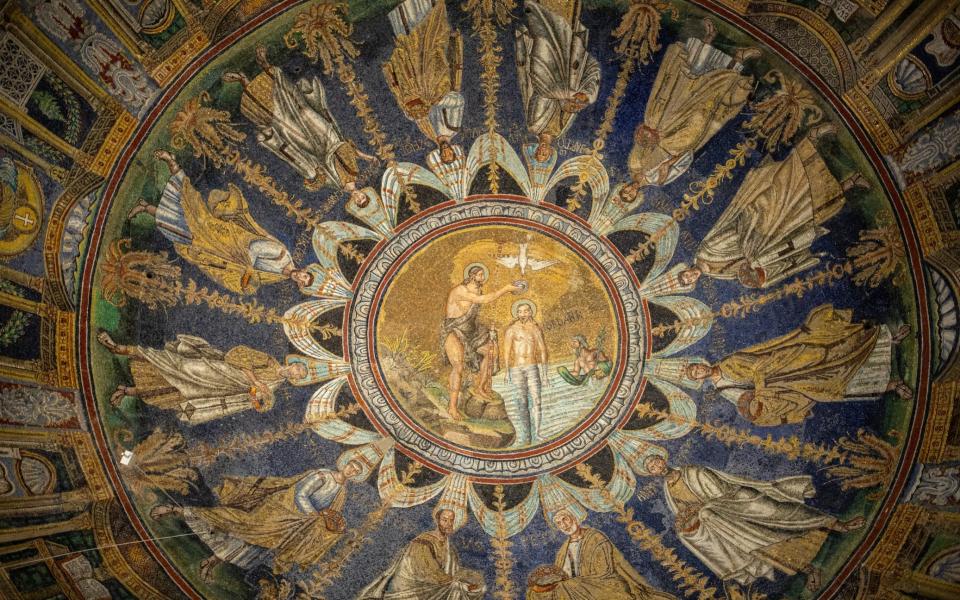
Archiepiscopal Chapel
AD 500
This tiny chapel was built in the archbishop’s palace, which is now the city museum. It is the only surviving early-Christian private oratory, and the walls and ceilings are entirely covered with marble, mosaics and paintings. One of the most striking is in the lunette above the entrance door, which depicts a warrior Christ with one foot crushing a serpent and the other on the head of a lion. The barrel vault that leads up to it throngs with songbirds.
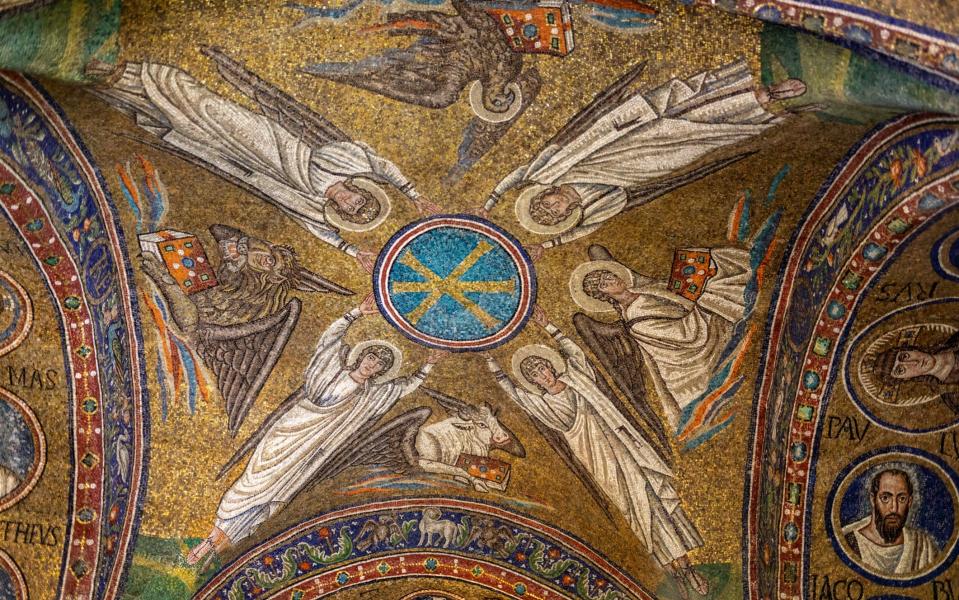
The buildings of Theodoric the Great
AD 500-526
Theodoric was the powerful Barbarian king (Ostrogoth, to be precise) who took control of a significant chunk of the old western Roman Empire in 493 and chose Ravenna as his capital and followed the Arian Christian doctrine. He had his brutal side – after agreeing to share power, he immediately betrayed his rival, Odoacer, at a celebratory banquet, cutting him in half with his own sword. He was a brilliant builder however, and three important structures survive.
The Basilica of Sant’Apollinare Nuovo was Theodoric’s private church, built next to his palace (now lost) in the early years of his reign. The interior of the nave has been adapted several times over the centuries, but the mosaics on the upper levels have survived, including a depiction of the original palace itself, 26 panels illustrating Biblical stories and a multitude of figures against a golden background, including Christ dressed as a Roman Emperor, saints, prophets and a portrait of the Emperor Justinian, which probably replaced an original of Theodoric. The Arian Baptistery was built by Theodoric next to his cathedral (now lost). The octagonal interior has been stripped back to bare brick, but the golden mosaics in the dome – a Baptism of Christ surrounded by the 12 Apostles – are still dazzling.
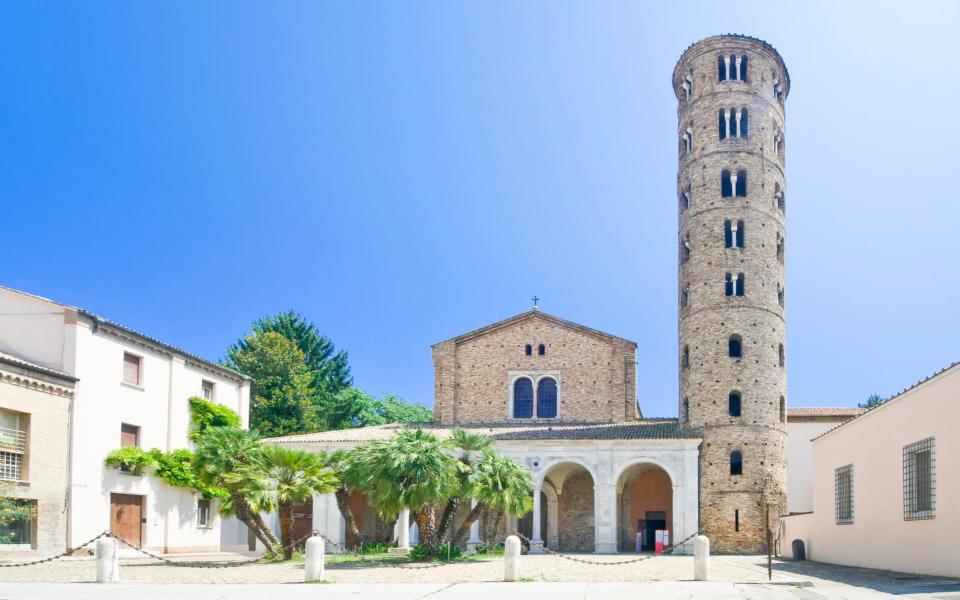
The rest of Theodoric’s churches and cathedrals are lost, but his mausoleum remains almost perfectly intact on the outskirts of the city. It is an astonishing architectural achievement formed of two decagons, one above the other, with a circular domed roof. This carved from a single piece of stone weighing 230 tons and 33ft in diameter. After 1,500 years, no one has worked out for sure how it was put in place.
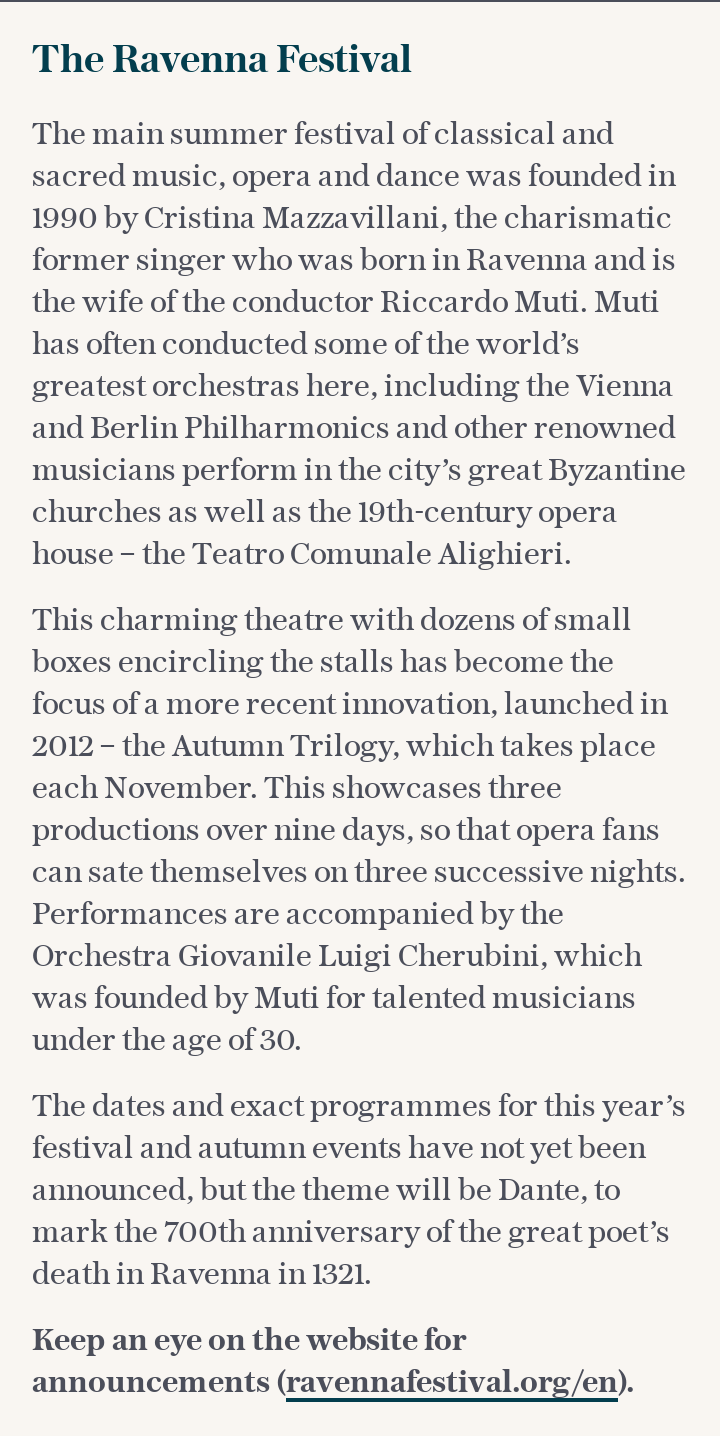
After Theodoric: Basilica di San Vitale
AD 525-550
The Ostrogoths were driven out of Ravenna by Justinian, Emperor of the Eastern Empire at the beginning of the 6th century, and along with Hagia Sofia in Istanbul, this is one of two great surviving churches which he built. Light streams into the arcaded octagonal building from the high windows. Two extremely rare sections of the original 6th-century marble mosaic floor survive with decorative scenes of birds and fruit. But the most spectacular treasures are the mosaics in the apse, including Christ the Redeemer, flanked by two archangels in the vault and, below it, panels depicting Emperor Justinian and his wife Theodora. Don’t miss the Museo Nazionale, the cloisters and former monastery next door.
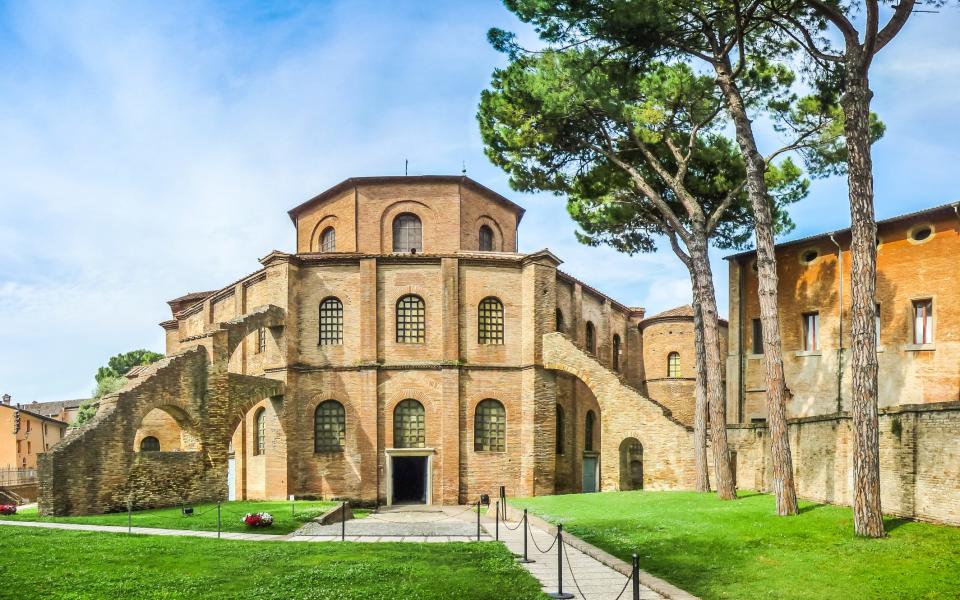
Basilica of Sant’Apollinare in Classe
Consecrated AD 549
About five miles outside Ravenna, Classe is the old port area and the airy three-aisled church here was built at the same time as San Vitale. There has been much restoration over the centuries, but the great mosaic in the apse, which shows the hand of God reaching down from the clouds and a charming scene of the figure of Sant Apollinaire standing with twelve white lambs among fields of stylised trees and lilies. Spend time in the church – it is full of marble tombs decorated with some wonderful carving.
The closest airports to Ravenna are Bologna and Rimini – find flights on skyscanner.net. See our guide to the best hotels in Italy. For more information, visit turismo.ra.it/eng.


